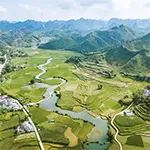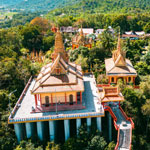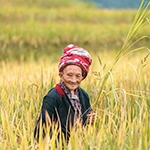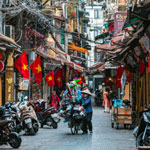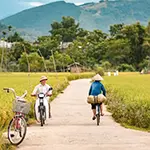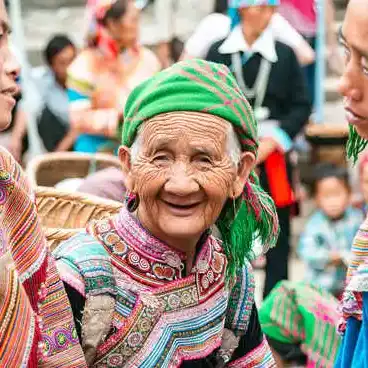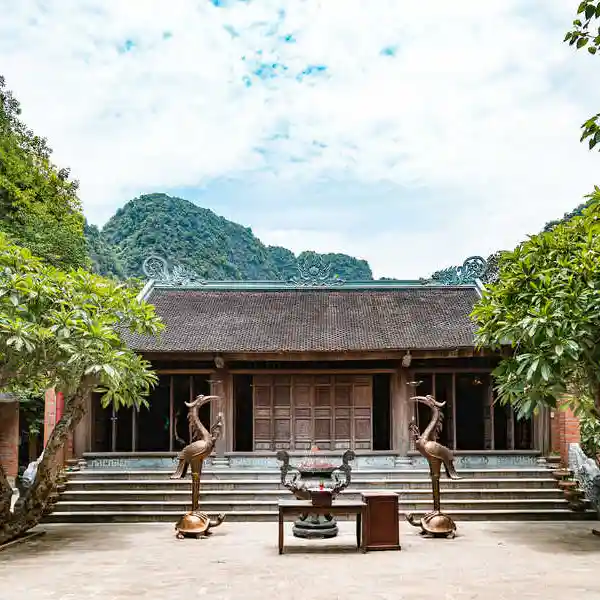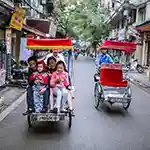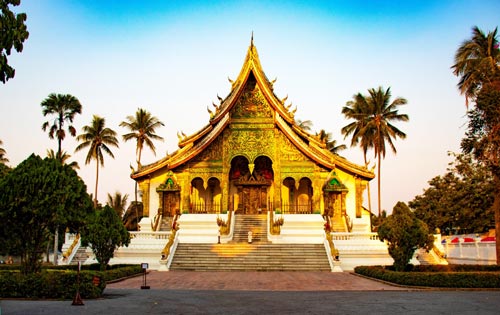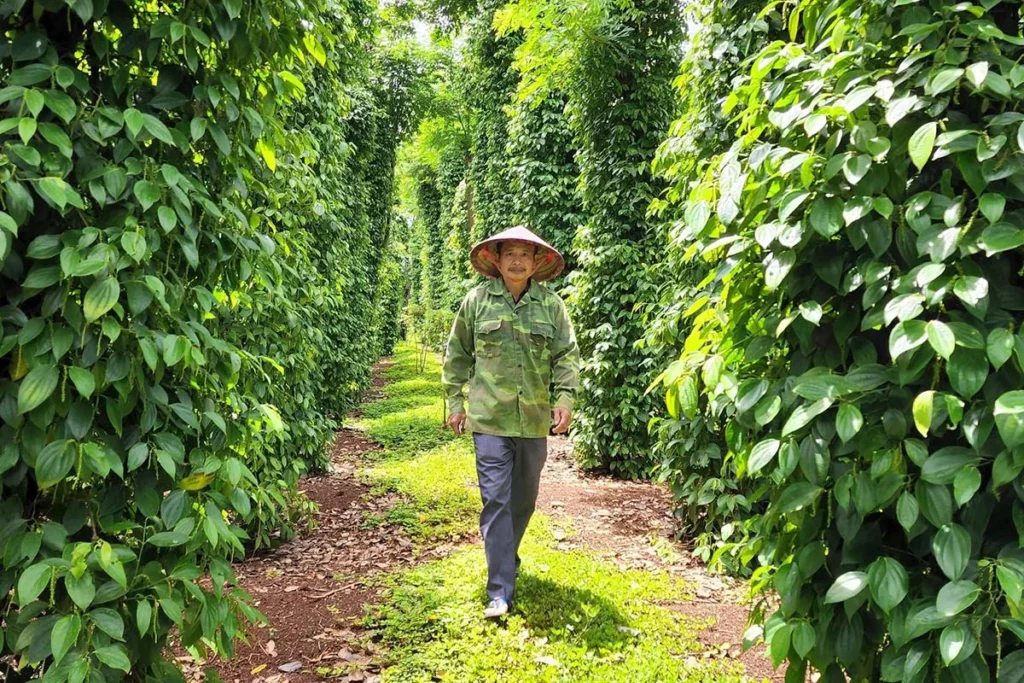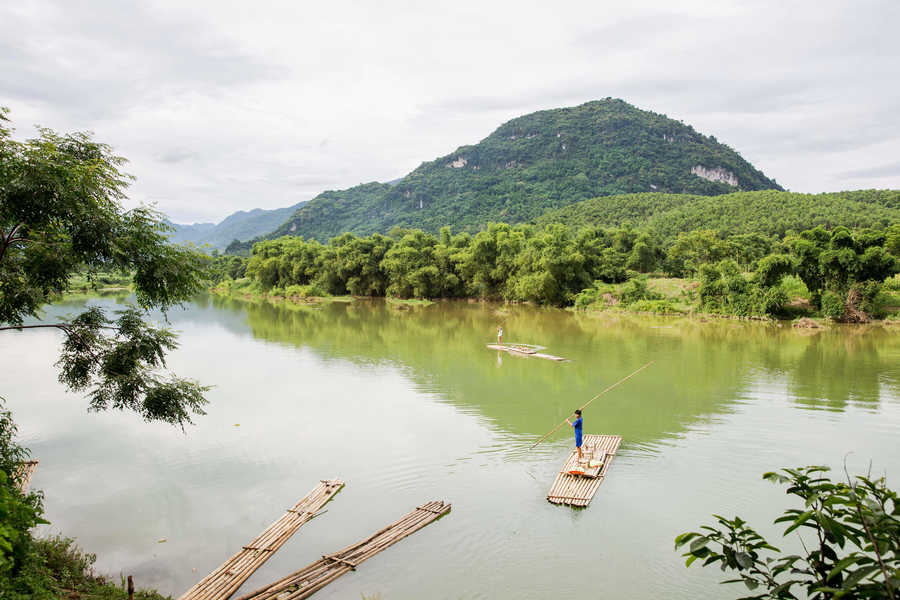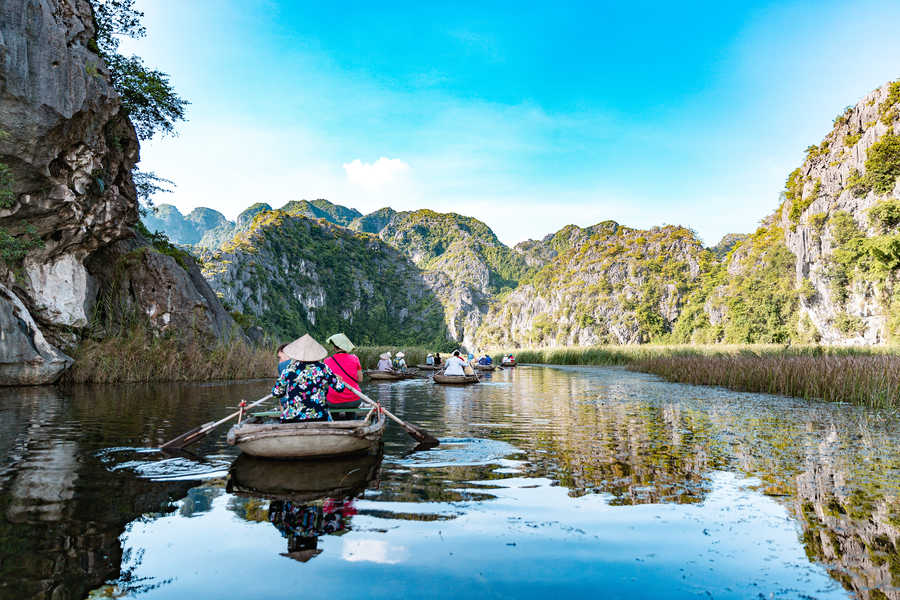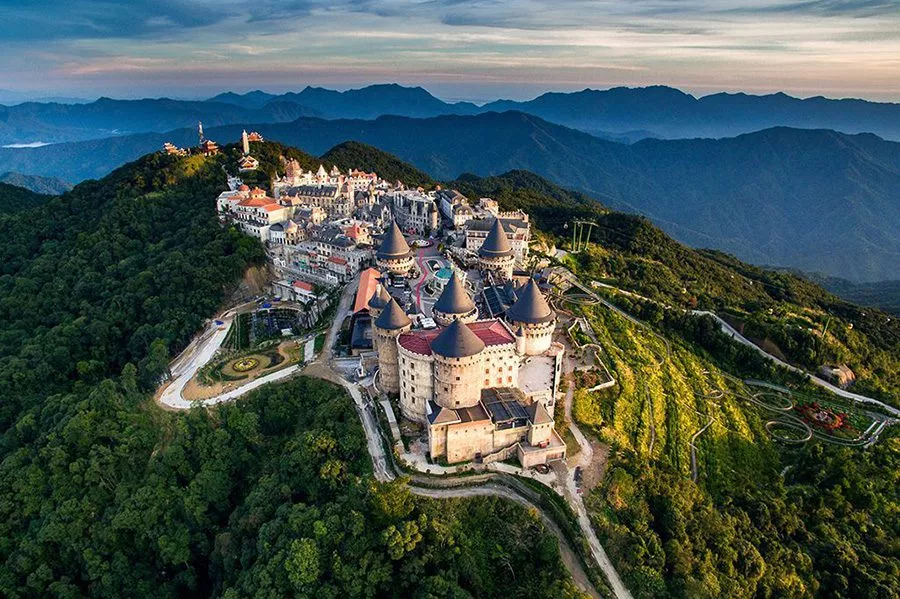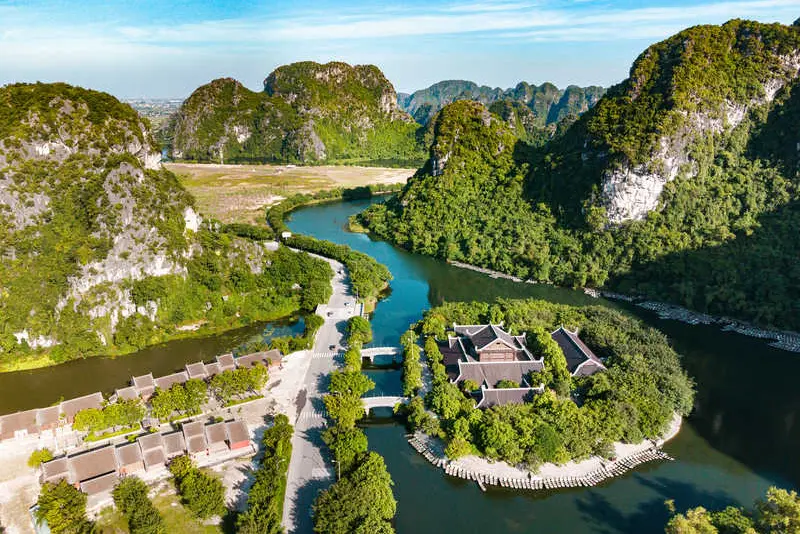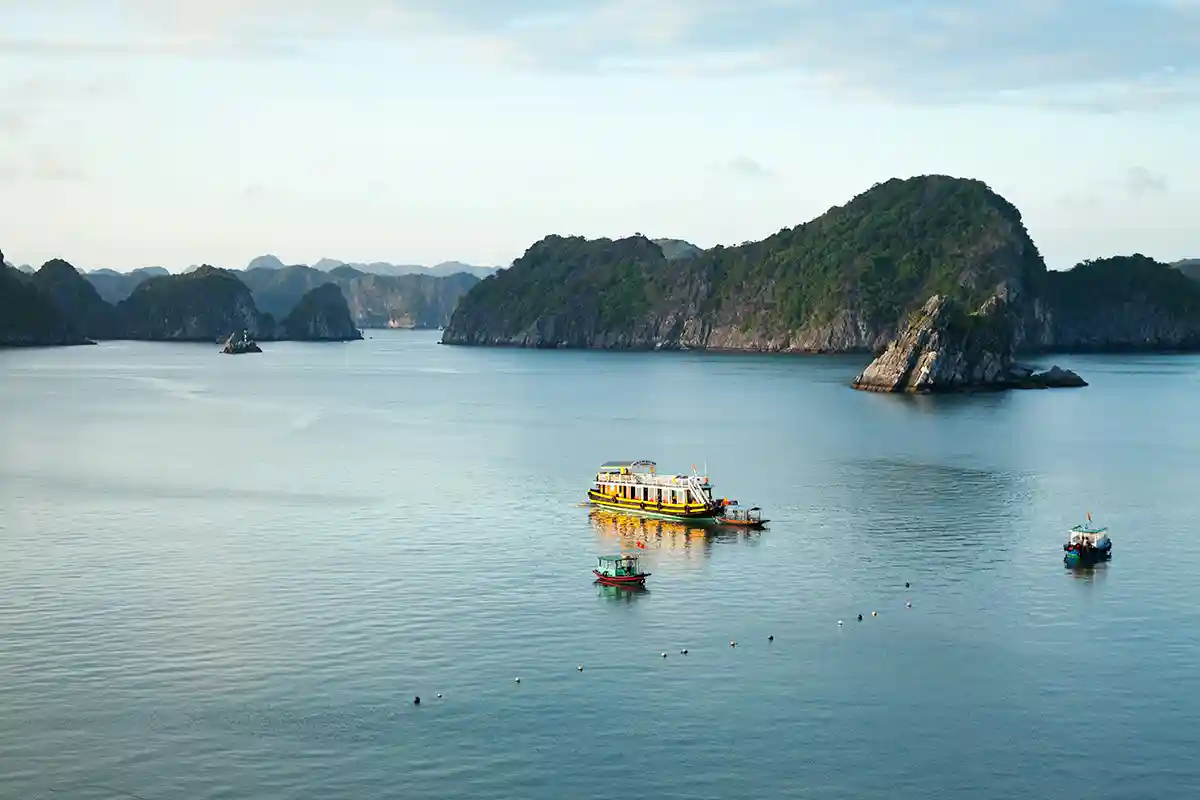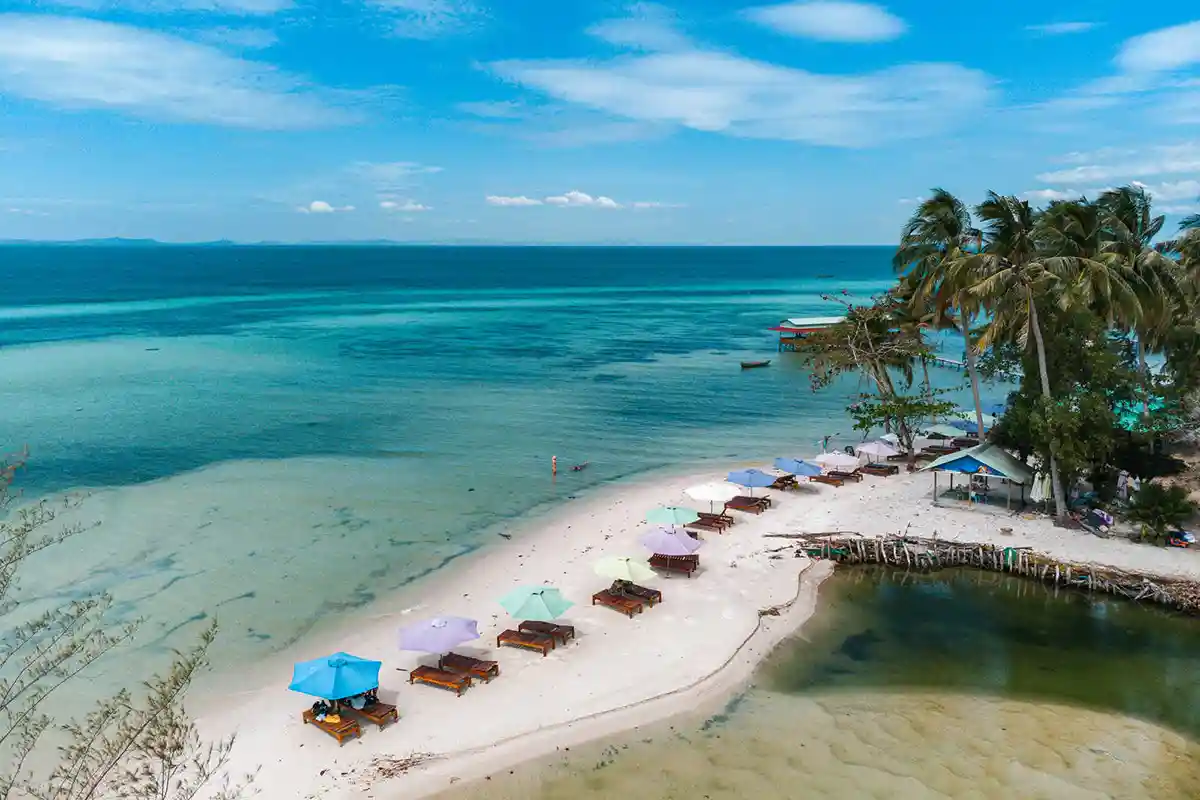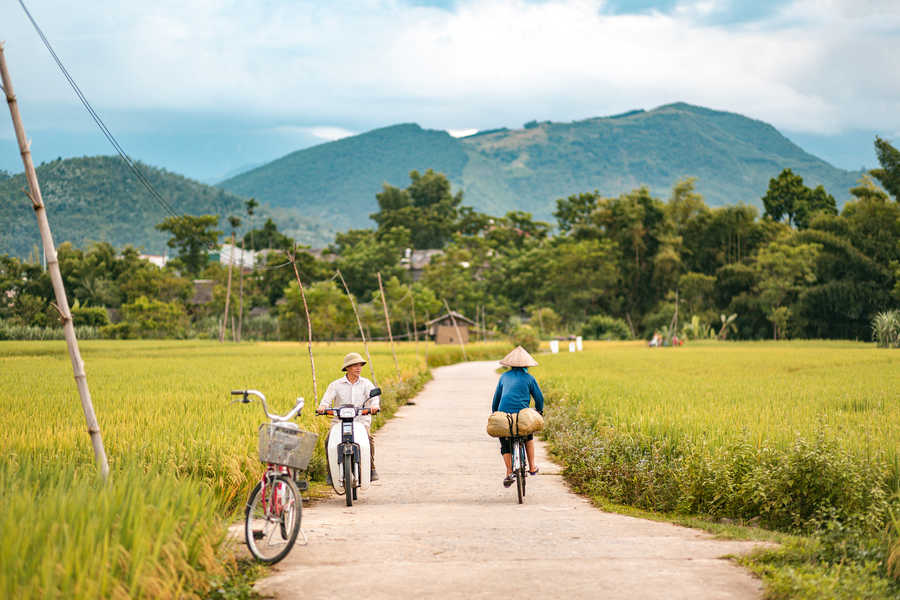Less known than that of its neighbor Cambodia, Vietnamese pepper nonetheless enjoys a strong reputation, both nationally and internationally. This is reflected in the fact that Vietnam is today the world’s largest producer of black pepper and the second-largest producer of pepper overall, after India.
In this article, we will explain what makes Vietnamese pepper unique and where you can buy it.
Black and red pepper, Vietnam’s two jewels
In Vietnam, the two main types of pepper cultivated are black and red. While both come from the same plant, they have different flavors and uses.
Black pepper is the mature fruit of the pepper plant, harvested while still green and unripe. The black pepper is then dried, which gives it its characteristic black color. It has a pungent, warm taste with woody and peppery notes.
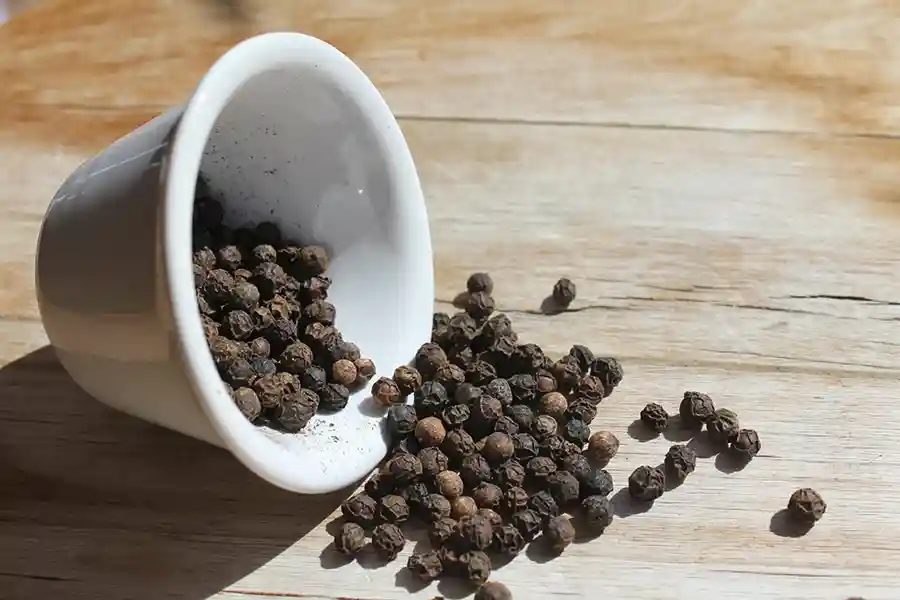
Vietnam black pepper
Red pepper, on the other hand, is the fully ripe fruit of the pepper plant, harvested at full maturity. The red pepper is sun-dried until its outer skin shrinks and hardens, revealing a dark red seed inside. Red pepper has a milder, fruitier flavor than black pepper, with a hint of sweetness and a gentle spiciness.
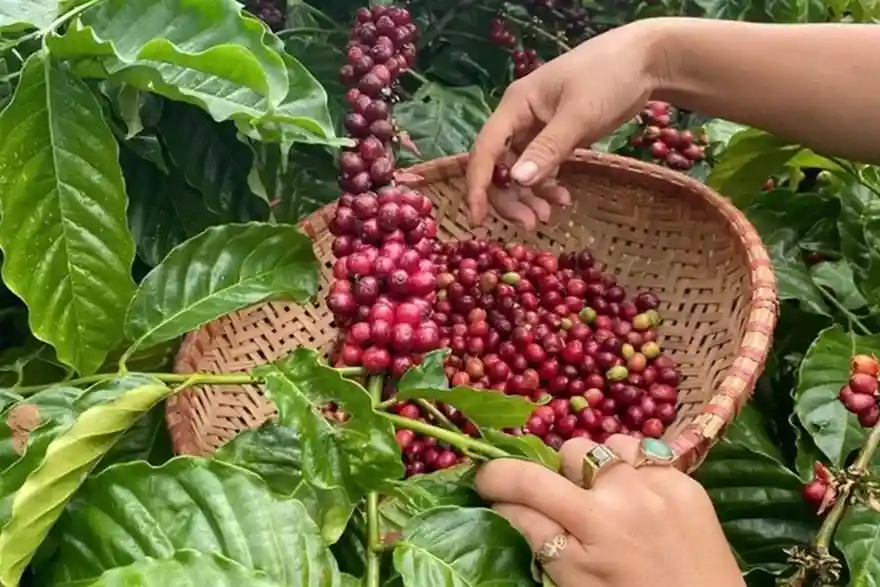
Vietnamese red pepper
In cooking, black pepper is often used to add heat and spiciness to savory dishes, while red pepper is frequently used to add a fruity, mild flavor to both sweet and savory dishes. Red pepper is the variety most commonly found in traditional Vietnamese dishes such as pho and bun cha.
What makes Vietnamese pepper special
These two types of pepper share several characteristics that set them apart from peppers grown elsewhere in the world.
Here are a few of them:
Distinctive aroma: Vietnamese pepper has a unique aroma often described as floral, fruity, and slightly sweet. This particular flavor comes from the unique climatic conditions in which the pepper is grown.
Rich in essential oils: Vietnamese pepper is rich in essential oils, giving it a more intense aroma and flavor than peppers from other countries. This richness is particularly notable in black pepper.
High piperine content: Piperine is the compound that gives pepper its spiciness. Vietnamese pepper has a high piperine content, which results in a stronger, more intense flavor than other peppers.
Traditional cultivation: Pepper is grown using traditional methods in Vietnam, meaning local farmers rely on ancestral farming techniques. This imparts authentic quality and flavor to the pepper.
Variety of peppers: Vietnam is known for producing a variety of peppers, including black, white, and red. Vietnamese red pepper is especially valued for its slightly sweet taste and fruity aroma.
Main pepper-growing regions in Vietnam
To visit pepper plantations, you need to head south, where the sunny climate is ideal for cultivation.
Here are the provinces home to many of these plantations:
Phu Quoc Island: This is one of the most famous places to visit pepper plantations in Vietnam. Phu Quoc’s pepper plantations produce a variety of aromatic and spicy black pepper, which is widely used in both Vietnamese and international cuisine (see below for more details).
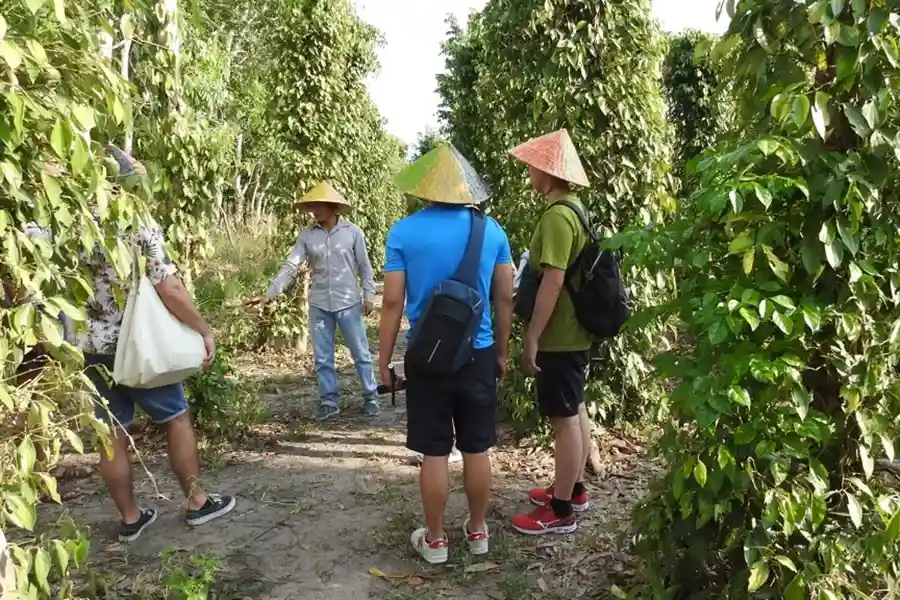
Phu Quoc pepper plantations
Dak Lak Province: This region is also known for its pepper production, particularly around the city of Buon Ma Thuot. Pepper plantations in Dak Lak are typically managed by local farmers and offer an immersive experience of rural Vietnamese life.
Dak Nong Province: Located near the Cambodian border, this area is renowned for high-quality pepper plantations, including wild pepper varieties.
Gia Lai Province: Situated in the Central Highlands of Vietnam, this province is famous for its black pepper production. Visitors can tour Gia Lai’s pepper plantations to learn more about pepper cultivation and sample different types of pepper.
It is important to note that the best time to visit pepper plantations is generally from December to March, during the harvest season. Guided tours can be arranged through local travel agencies, or you can visit the plantations directly to learn more about this important Vietnamese crop.
Phu Quoc Pepper: a world-renowned spice
Among Vietnam’s most famous peppers, Phu Quoc pepper is often the first that comes to mind, to the point that the terms “Phu Quoc pepper” and “Vietnamese pepper” are sometimes used interchangeably.
The uniqueness of Phu Quoc pepper lies in its distinct terroir and the ideal growing conditions on Phu Quoc Island, located off the southwest coast of Vietnam in the Gulf of Thailand. Phu Quoc pepper is considered one of the world’s finest peppers due to its complex flavor and unique aroma.
Phu Quoc pepper has a slightly sweet taste and a lingering heat that gradually fades, leaving a subtle, mild pepper flavor. Its flavor is often described as more complex and aromatic than that of common peppers.
The climate and soil conditions on Phu Quoc Island are ideal for pepper cultivation, with a warm, humid tropical climate year-round and nutrient-rich soil. In addition, pepper is often grown traditionally and artisanally on the island, which also contributes to its superior quality.
Black pepper from the Highlands
In Vietnam’s Central Highlands, several types of pepper are cultivated, but the most commonly grown is black pepper.
The Central Highlands offer ideal growing conditions for black pepper, with a warm, humid climate year-round and nutrient-rich soil. Pepper plants are often grown in family gardens, allowing for artisanal, high-quality production.
While black pepper is the best-known and most widely cultivated variety, other types of pepper are also grown in the Central Highlands, including white pepper, red pepper, and green pepper. Each variety is harvested at different stages of ripeness and is used for specific dishes and recipes.
Where to buy pepper in Vietnam?
You have several options:
# Buy directly from producers during your trip to Phu Quoc or the Central Highlands of Vietnam
#Purchase from specialized shops in the city
# Shop at small stalls in Hanoi’s Old Quarter
# Buy online from companies that export abroad
# Purchase in Europe from companies that import, resell, or sometimes process Vietnamese products.
Below, we provide examples based on these locations.
Where to buy pepper in Phu Quoc?
As pepper is one of Phu Quoc’s most famous products, you can find it for sale in many locations.
Pepper Farms: There are several pepper farms on Phu Quoc Island where visitors can learn about the pepper production process and purchase local products directly from the producers. Some farms also offer guided tours to explore the different varieties of pepper.
Here are a few examples:
Pepper Farm Phu Quoc : This farm is one of the oldest and most well-known on the island. It offers guided tours to showcase the different varieties of pepper, as well as tastings of local products.
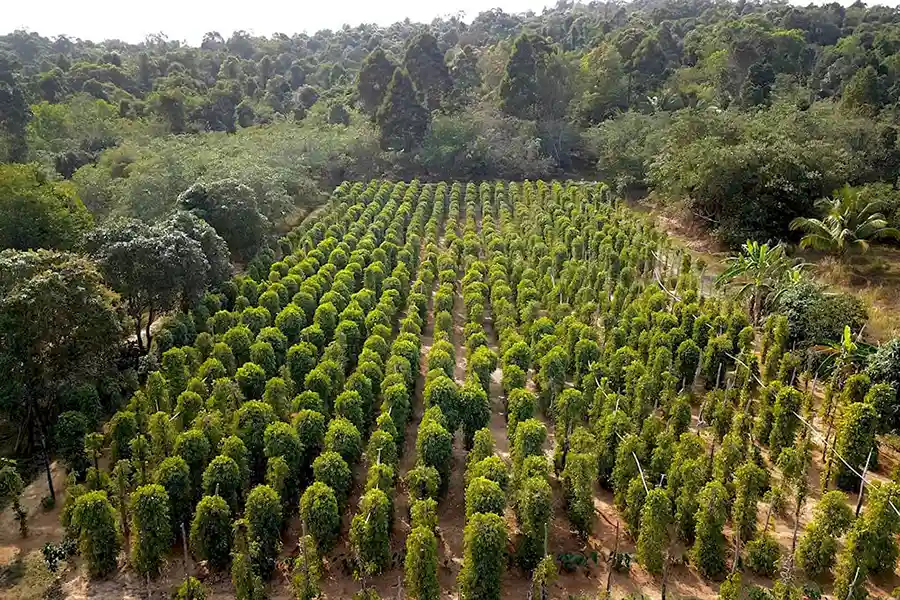
Khu Tuong Pepper Farm: This family-run farm produces high-quality organic pepper. It offers guided tours to showcase the pepper production process, as well as tastings of local products.
Duong Dong Market: Duong Dong Market is the largest market on the island and offers a wide variety of local products, including Phu Quoc pepper. Vendors often sell both black and red pepper, as well as spice blends.
Souvenir Shops: There are several souvenir shops in Phu Quoc that sell the island’s pepper, along with other local handcrafted products.
Where to buy pepper in Dak Lak
The best option is to visit the agricultural cooperatives in the province. Here are a few located in different districts. We recommend going with a guide to fully understand the working process of these cooperatives.
Buon Ma Thuot Agricultural Cooperative: Located in the city of Buon Ma Thuot, this cooperative offers locally produced black and white pepper. Guided tours are also available to learn about the pepper production process.
Cu M’gar Agricultural Cooperative: Situated in Cu M’gar commune, this cooperative offers high-quality black and white pepper. Guided tours are available to explore the pepper production process.
Dak Ha Agricultural Cooperative: Located in the Dak Ha district, this cooperative produces local black and white pepper. Guided tours are also offered to showcase the pepper production process.
Krong Buk Agricultural Cooperative: Situated in the Krong Buk district, this cooperative provides locally produced black and white pepper, with guided tours available to learn about the production process.
Where to buy pepper in Hanoi
Hanoi Spices: This is a specialty shop offering organically produced spices, including pepper. They have a wide selection of peppers, including black, white, red, and Phu Quoc pepper. Their full range of peppers is available online.
Address: No 9, Alley 160 Luong The Vinh St., Thanh Xuan Bac Ward, Thanh Xuan District, Hanoi, Vietnam
Téléphone : +84 24 6 329 3492 , +84 977 711 666
Email: sales@hanoispices.com
Hang Gai Street in the Old Quarter: If you want to experience the aroma of spices, visit Hang Gai Street in Hanoi, home to dozens of small shops specializing in spice sales. Travelers can find a wide variety of spices, including pepper, as well as traditional Vietnamese handicrafts. Hang Gai Street is also known for its silk shops, art galleries, and charming cafés, making it a popular destination for tourists seeking to explore Vietnamese culture and craftsmanship.
Dong Xuan Market: This is Hanoi’s largest market, where you can find a wide variety of spices, including pepper. You can find peppers of different qualities and origins and even negotiate prices with the vendors.
How to buy pepper from abroad
For those who want to import pepper and other spices, you can use the services of Viet Pepper, a company specializing in the sale and export of Dak Lak pepper. They also operate their own farm on site.
For French buyers, Chef Didier Corlou, who has opened several restaurants in Vietnam, now heads Epices Corlou. An expert in the field, he specializes in the sale of spices, including Vietnamese pepper.
Now you know everything you need to explore Vietnamese pepper, a product exported worldwide.

